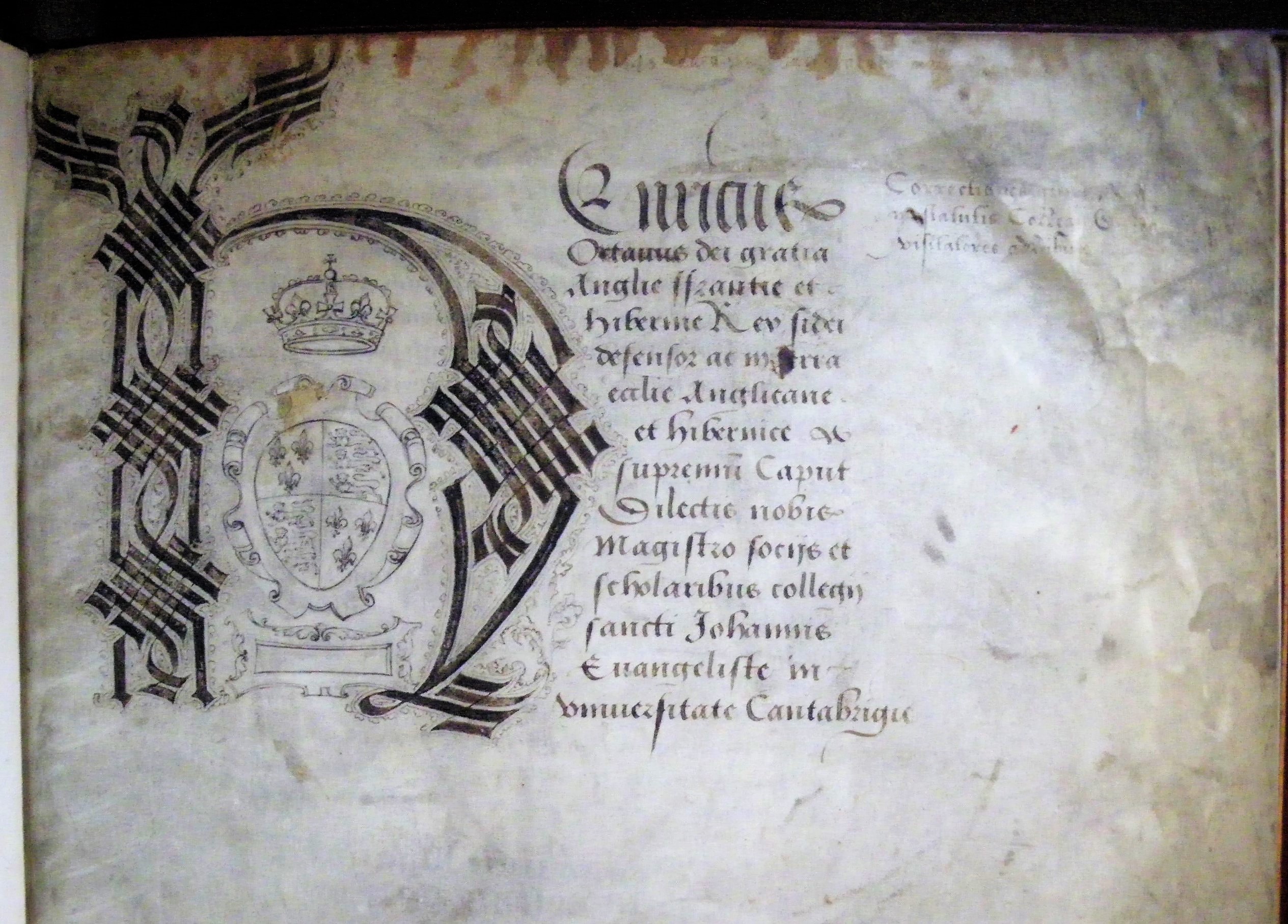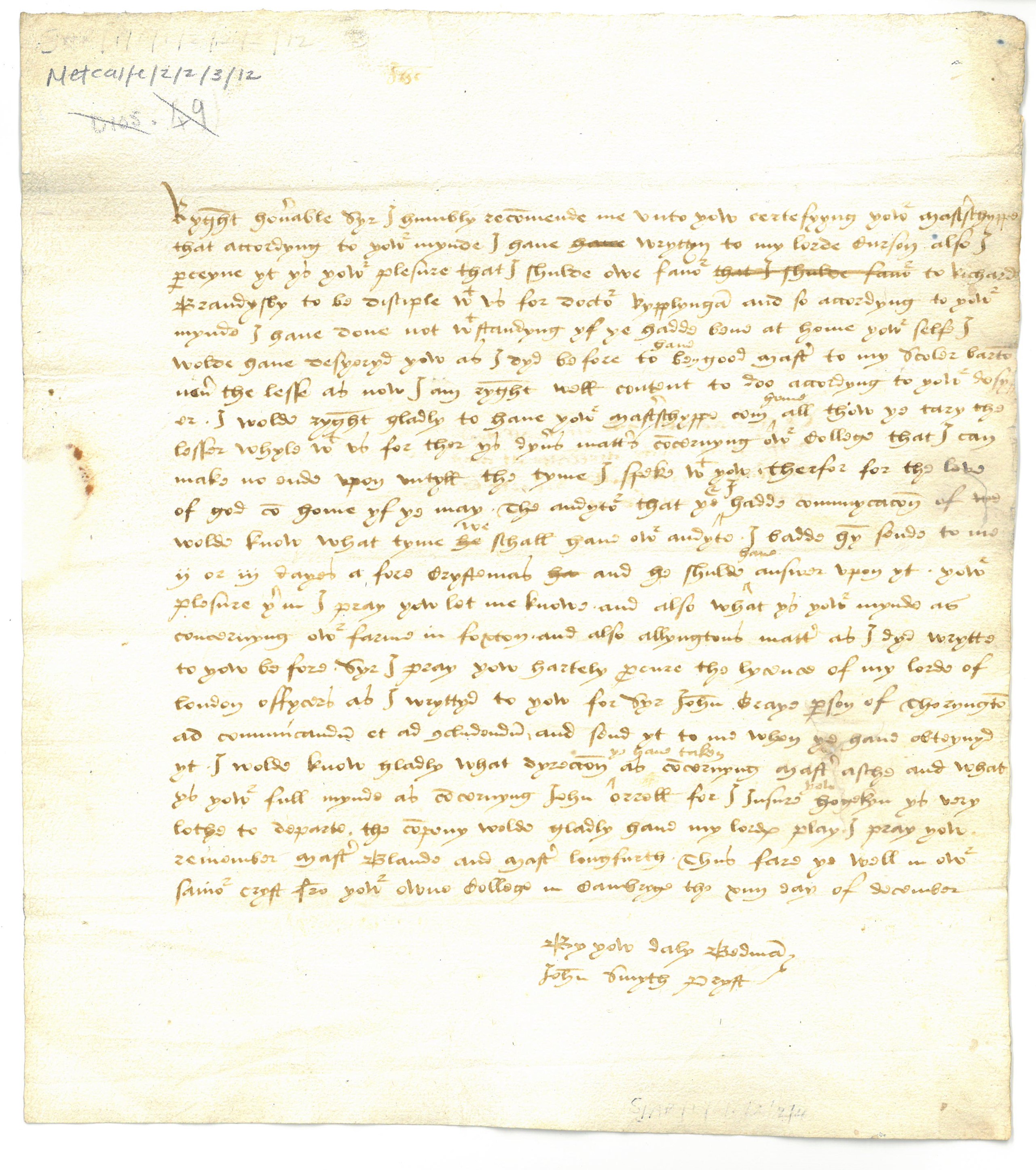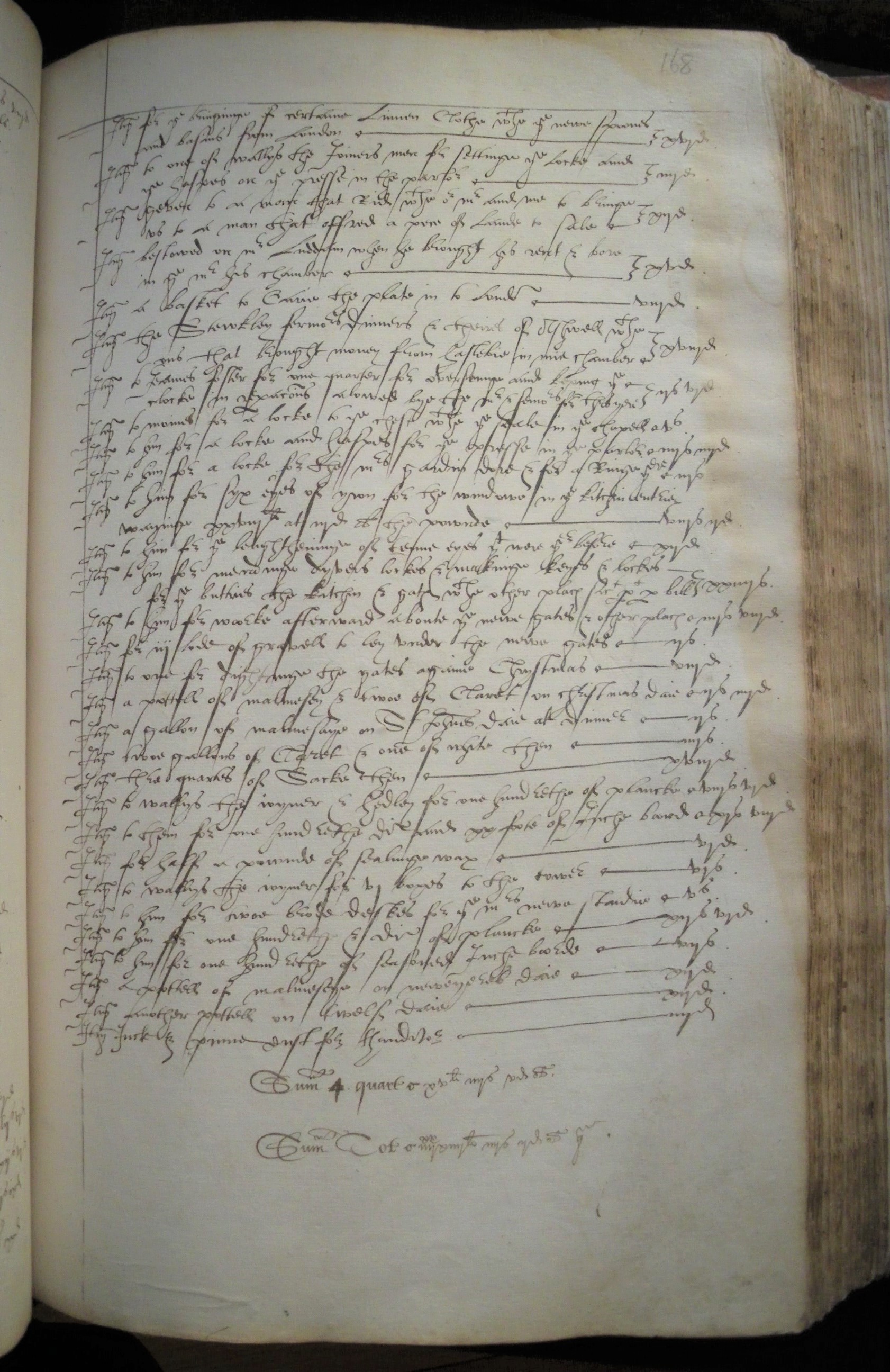The Festive Season in Tudor St John's
The Festive Season in Tudor St John's
At the end of Michaelmas term, when thoughts turn to the Christmas holidays, it is nice to feel connected to our predecessors by knowing just a little of how Fellows and Scholars living in College, in the years after it was first built, spent their festive season.
1557 Hall expenditure
This page from the College accounts (or ‘rentals’) of 1557, recording Hall expenses, ends with two items of expenditure for the festive season: 20 shillings allowed to Master Dodington, ‘the Lorde in Christinmas’, and 2 shillings 6 pence for ‘gevinge to the waittes accordinge to the olde Custome’. The money allocated to Master Dodington was to be used to fund the Christmas entertainments. The ‘Waits’ were official town musicians who provided free music at civic ceremonies and on special occasions.
Ref: SJAR/3/2/4/1 f. 45r
Bartholomew Dodington
Bartholomew Dodington, who was chosen to be lord of Christmas in 1557, matriculated at St John’s in 1547 and was made a Fellow in 1562. This image shows his entry in the Register of Fellows, Officers and Scholars (in the centre of the page). Dodington moved to Trinity in 1560, was Regius Professor of Greek, 1562-1585, and when he died in 1595 was buried in Westminster Abbey.
Ref: SJAR/6/1/1/1 f. 135r
1545 Statutes frontispiece
The task of being ‘lord in Christmas’ is legislated for only in the Statutes of 1545, which were authorised by King Henry VIII. It appears in the chapter Concerning the Prohibition of Games, Hunting, and Fowling and stipulates that Fellows must take it turn to hold the role, must write Statutes in Greek or Latin verse and prepare at least six ‘dialogues’ and the same number of festive or literary spectacles throughout the twelve days of Christmas. This image shows the frontispiece of one of two copies of the 1545 Statutes held in the College archives, with the decorated initial ‘H’ of Henricus.
Ref: SJGR/3/4/1/3/2

Letter to Nicholas Metcalfe
At least one play put on at St John’s over the Christmas season was very likely written by Nicholas Metcalfe, the third Master of St John’s (in office 1518 – 1537). In letters of December c. 1521, John Smith, President of the College, writes from Cambridge to Metcalfe in London and twice says that their “company” [of players] would like to have his play. In this letter of 14 December one of Smith’s concluding remarks is that “the compeny wolde gladly have my lordes play”.
Ref: SJAR/1/1/Metcalfe/2/2/3/12

Christmas cards
The Christmas period was the only time in the College year when the rules were relaxed so that Fellows and Scholars were allowed certain entertainments – although only in Hall. There were variations in the detail of this ruling in the different iterations of the Statutes, however: in the 1516 and 1524 Statutes, no-one could play dice or cards save during Christmas; in 1530, Fellows were allowed to play cards and dice during Christmas but scholars were not; in the 1545 Statutes, both Fellows and scholars could play cards but dice was absolutely forbidden; in the 1580 Statutes, the earlier prohibition on cards being played ‘late at night’ was made more specific, with a deadline of 10 p.m. imposed.
Page from one of the two copies of the 1545 Statutes, with the section on cards and dice corrected in the margin.
Ref: SJGR/3/4/1/3/2 p. 62
Festive wine in 1560
The Feast of St John the Evangelist is on 27th December and was as big a celebration as Christmas Day, and certainly cost more. Sitting within the twelve days of Christmas, when rules on games were relaxed and festive entertainments were taking place, the accounts show that it was also a day on which more money was spent on wine in Hall. This page shows expenses in the last quarter of 1560; as well as recording supplies for the festive season it lists all sorts of types of expenditure, from gravel to lay under the new gates, to sealing wax. Using measurements of a potell (4 pints) and gallon (8 pints), the accounts for 1560 list:
- 1 potell of Malmesey and 2 of claret on Christmas Day - 2 shillings 4 pence
- 1 gallon of Malmesey on St John’s Days at dinner - 2 shillings
- 2 gallons of claret and 1 of white [wine] then (i.e. St John’s Day) - 4 shillings
- 3 quarts of sack then (i.e. St John’s Day) - 18 pence
- 1 potell of Malmsey on New Year's Day - 12 pence
- 1 potell of Malmsey on Twelfth Day - 12 pence
Ref: SJAR/3/2/4/1 f. 168r

Alms, 1566
This entry from the accounts for 1556 shows that 10 shillings was given to the poor in alms ('elemosina') on St John’s Day (27th December).
Ref: SJAR/3/2/4/1 f. 25v
Extra allowance on St John's Day
By the Statutes of 1545 an extra financial allowance was made to Fellows and Scholars on both Feasts of St John – the Feast of St John before the Latin Gate on 6 May, and the Feast of St John the Evangelist on 27 December. Fellows were to be given an extra 15 shillings and Scholars an extra 5 shillings. This clause remained in force in the 1580 Statutes, but the amount did not increase with the passage of 35 years. Pictured is the opening of the relevant chapter of the 1580 Statutes.
Ref: SJGR/3/4/1/5 f. 30r